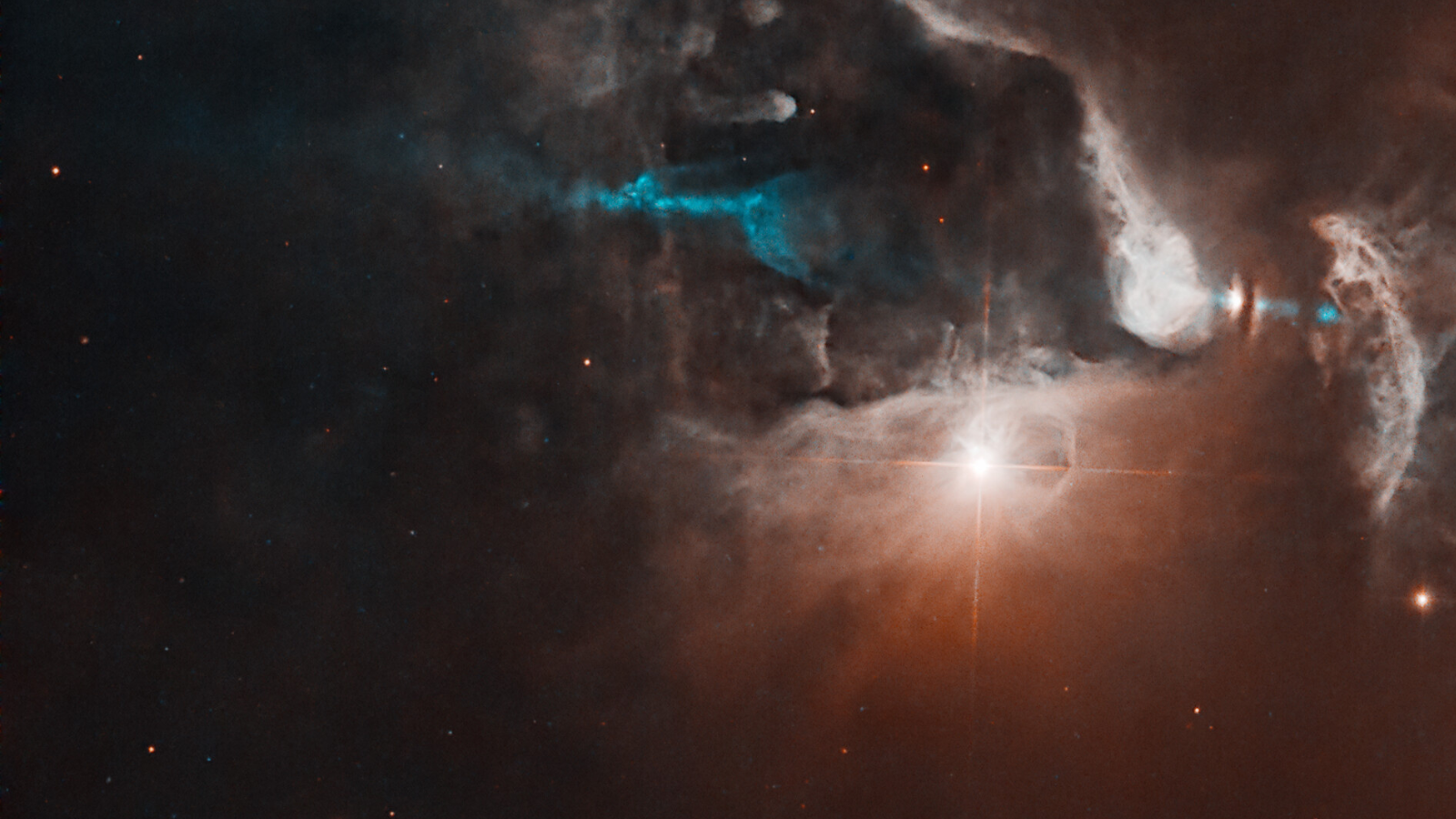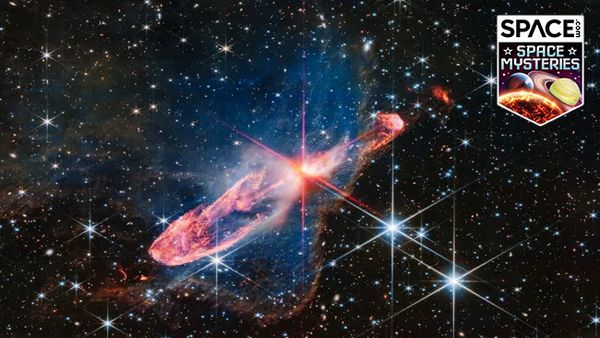
The Hubble Space Telescope has imaged a powerful jet erupting from a natal envelope of gas and dust that represents a newly born star announcing itself to the cosmos.
Hubble spotted the infant star slicing its way out of the nebula that birthed it when it zoomed in on the youthful multi-star system FS Tau. Located 450 light years from Earth, FS Tau is part of the Taurus-Auriga region. This region of space houses a stellar nursery of dark clouds of gas and dust, or "molecular clouds," that are home to numerous newly forming protostars and young stars.
Astronomers had previously discovered binary infant stars in this 2.8 million-year-old nebula, and now a second infant star, designated FS Tau B, has made itself known.
Related: Hubble Space Telescope discovers 'failed stars' are bad at relationships too
Both FS Tau B and the previously discovered infant stars in the FS Tau stellar nursery, a binary named FS Tau A (Haro 6-5A), are shrouded in illuminated gas and dust. This represents what is left of the matter in which overdense patches formed and collapsed to birth these stars.

As the Hubble image shows FS Tau B is partially obscured by a dark, vertical lane of dust. This is believed to be the edge of a pancake-shaped gathering of gas, and dust called a protoplanetary disk that surrounds the infant star. As the name suggests, this material left over from the formation of FS Tau B will eventually coalesce to form planets.
FS Tau B isn't a fully-fledged star just yet. This protostar is currently gathering material from its surroundings. Once it has accumulated enough mass, the pressure at the heart of FS Tau B will be so great that hydrogen begins to undergo nuclear fusion to create helium in its stellar core. That is the nuclear process that defines the main sequence lifetime of a star.
FS Tau B and similar protostars shine not because of nuclear fusion but because of the heat generated by the collapse of the dust cloud that birthed them and from the accretion of more material.
Protostars are known to erupt with fast-moving columns of highly energetic particles called jets, and FS Tau B is a prime example of this phenomenon. This particular jet is also remarkable as it is double-sided yet is also unusually asymmetrical. Seen in the image as a bright blue streak, the jet's asymmetry could be the result of the star expelling mass at different rates across its body.
As well as being a protostar, FS Tau B is classed as a Herbig-Haro object. This is a celestial body that is created when jets ejected from a young star slam into nearby clouds of gas and dust at high speeds. These impacts result in glowing patches in and around the nebulas that house protostars.
Once FS Tau B leaves the protostar phase, it will become a T Tauri star, a stellar object on the road to main sequence status like our 4.6 billion-year-old middle-aged star, the sun.










